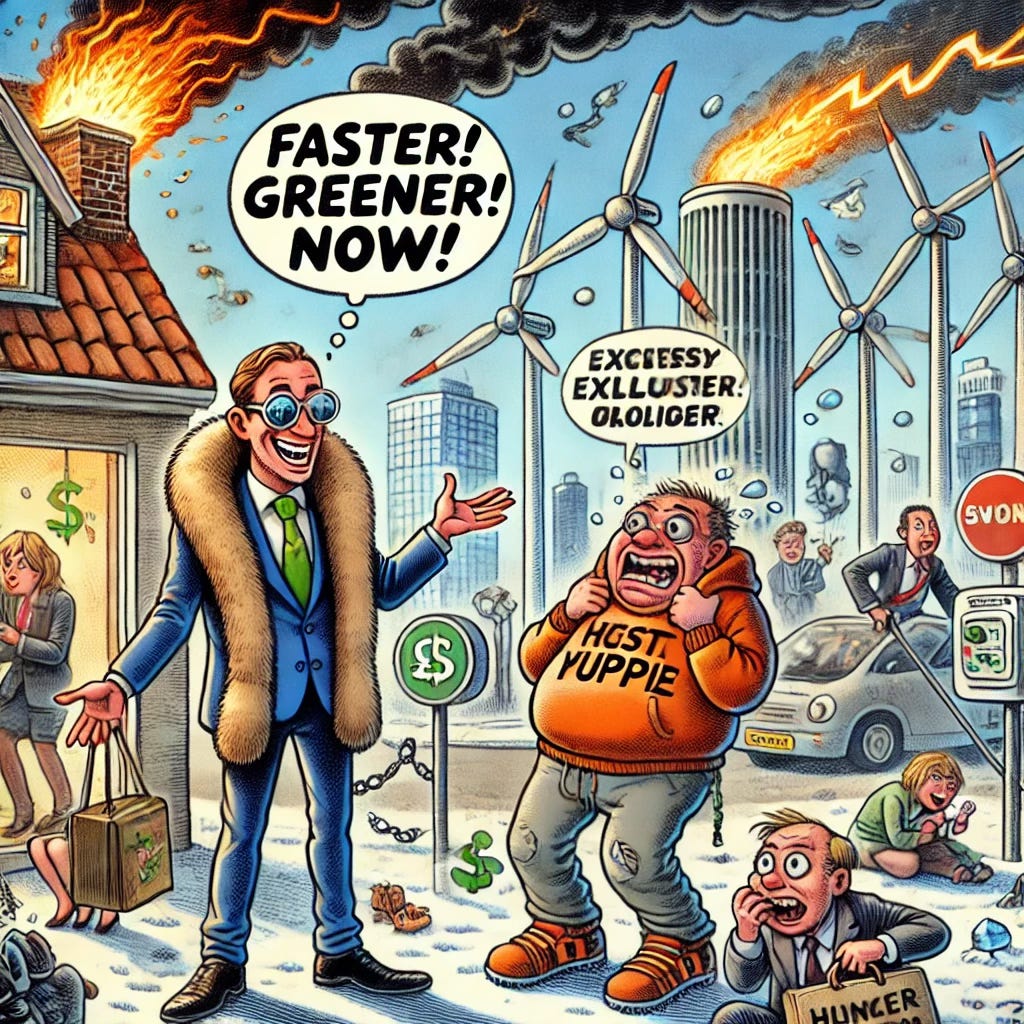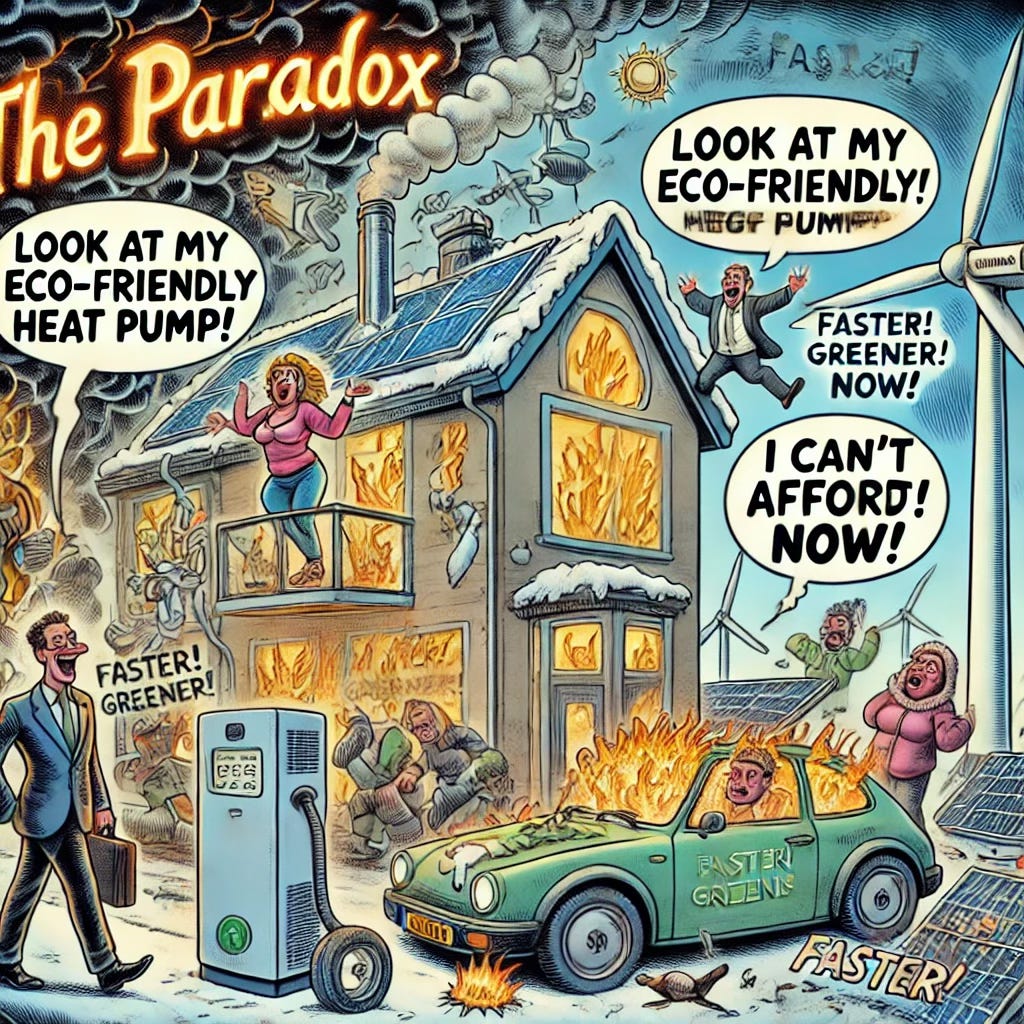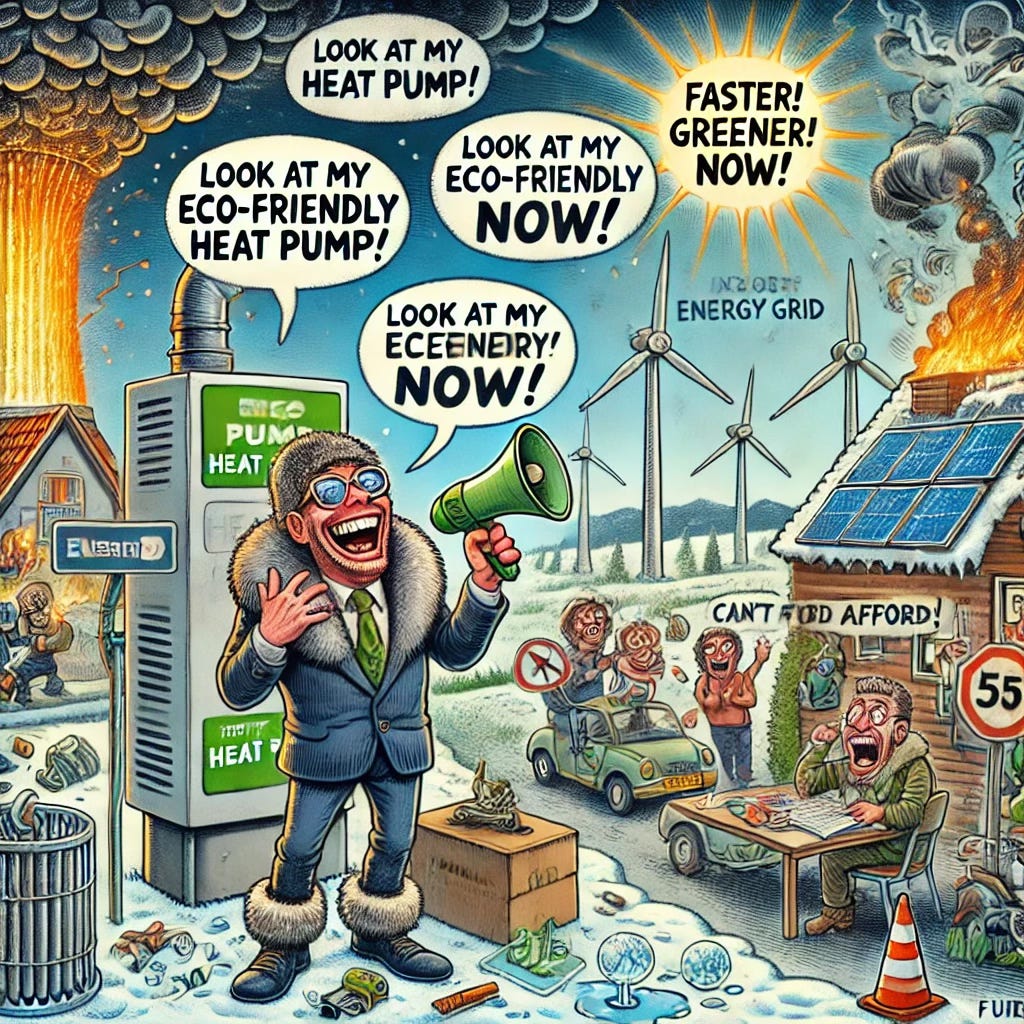- Pascal's Chatbot Q&As
- Posts
- In recent years, the Netherlands has embarked on an ambitious energy transition, aiming to reduce dependence on fossil fuels, particularly natural gas, and shift towards renewable energy sources.
In recent years, the Netherlands has embarked on an ambitious energy transition, aiming to reduce dependence on fossil fuels, particularly natural gas, and shift towards renewable energy sources.
However, critics argue that the urgency with which these changes are being implemented is causing significant problems, both economically and socially.
The Perils of a Hasty Energy Transition: A Dutch Perspective
by ChatGPT-4o, based on this blog post.
In recent years, the Netherlands has embarked on an ambitious energy transition, aiming to reduce dependence on fossil fuels, particularly natural gas, and shift towards renewable energy sources. However, critics argue that the urgency with which these changes are being implemented is causing significant problems, both economically and socially. This essay explores the issues surrounding the Dutch energy transition, as outlined in a satirical Dutch article, and provides context for non-Dutch readers to understand the underlying concerns.
The Rush to Heat Pumps and Its Consequences
One of the primary criticisms of the Dutch energy transition is the push to replace traditional gas heating systems with heat pumps. Heat pumps are considered more environmentally friendly but come with high upfront costs. To encourage adoption, the government has introduced substantial subsidies. However, these subsidies have led to a situation where mainly affluent demographics—often labeled as "left-wing yuppies from Amsterdam," wealthy baby boomers, and "silver spoon" heirs—can afford to install these expensive systems. This dynamic fuels resentment among those who cannot afford the switch, exacerbating social divisions.
Moreover, the Dutch Court of Audit (Algemene Rekenkamer) has raised concerns that excessive subsidies for heat pumps could hinder the development of district heating networks (warmtenetten). District heating is a system where heat is centrally produced and distributed via insulated pipes to residential and commercial buildings. It is seen as a crucial component of the Dutch energy strategy, yet an oversaturation of heat pumps could limit its effectiveness.
Strain on Infrastructure and Rising Costs
Another significant issue is the impact on the electrical grid. The transition to electric cars and the mass installation of solar panels, while beneficial for reducing carbon emissions, have placed an enormous strain on the country's electricity network. The rapid push towards electrification without sufficient infrastructure upgrades has led to frequent power disruptions, inefficiencies, and increased costs.
Similarly, the sudden move away from gas has resulted in skyrocketing energy bills for households. While policymakers aim to promote sustainability, the financial burden often falls on ordinary citizens, leading to skepticism about the feasibility of these measures.
Environmental and Practical Implications
In addition to economic concerns, the environmental consequences of renewable energy projects have also come under scrutiny. The rapid installation of wind turbines across the country has raised ecological concerns, particularly regarding their impact on bird populations and human well-being. Critics argue that the large-scale deployment of wind farms, without thorough research on their effects, has led to unintended consequences, such as increased bird mortality rates and noise pollution affecting local communities.
Similarly, while solar energy is promoted as a key solution to the energy crisis, the overwhelming adoption of solar panels has led to instances where electricity generation exceeds demand, causing inefficiencies and technical disruptions in the grid.
The Risks of Policy-Making Without Sufficient Research
A central theme in the critique of the Dutch energy transition is the perception that policies are being implemented without adequate foresight or research. Decisions appear to be driven more by political urgency than by careful planning. This has led to knee-jerk reactions, such as phasing out diesel vans without viable alternatives, which has had unintended consequences on industries that rely on such vehicles for essential services, including construction and plumbing.
This phenomenon, humorously referred to as the "Robjettification of the Netherlands" (a play on words suggesting robotic, unthinking, low-quality decision-making, while also referring to Dutch politician Rob Jetten), encapsulates the concern that policymakers are prioritizing rapid implementation over long-term strategy.
The energy transition debate has also intensified political and ideological divides in the Netherlands. Those advocating for rapid change, including environmentalist political parties like GroenLinks (Green Left), often label opponents as climate deniers. On the other hand, critics argue that the transition is being forced upon the public without addressing the financial and infrastructural challenges involved.
This divide is particularly evident in the discussion surrounding heat pumps. Early adopters—often wealthier individuals—express frustration when others question the feasibility of the transition, while lower-income groups feel excluded from decision-making processes that directly impact their cost of living.
Conclusion: A Call for Balanced Policy-Making
The Dutch experience with the energy transition serves as a cautionary tale for other nations pursuing similar policies. While the shift towards renewable energy is undoubtedly necessary to combat climate change, the approach must be pragmatic and inclusive. Rushing into reforms without comprehensive planning can lead to economic disparities, infrastructural inefficiencies, and unintended environmental consequences.
A successful energy transition requires a balance between ambition and practicality. Policymakers must ensure that new technologies are accessible to all socioeconomic groups, that infrastructure is adequately prepared for large-scale adoption, and that environmental impacts are carefully assessed. By taking a more measured approach, the Netherlands—and other countries facing similar challenges—can transition to a sustainable energy future without the pitfalls of hasty decision-making.
[Attempts by DALL-E to create a cartoon to go with this essay]


